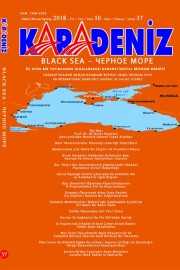Kırım Karayları Hakkında Kullanılan Bazı Kavram Ve Anlam Yanlışlikları Üzerine
On the Wrong Use of Some Concepts and Semantic Mistakes About Crimean Karais
Author(s): Erdoğan AltınkaynakSubject(s): Jewish studies, Ethnohistory, Semantics, Migration Studies
Published by: Kültür Ajans Tanıtım ve Organizasyon
Keywords: Crimean Karai; Migration; Khazar Khanate; Karaism; Annan bin David (Annan; son of David); Castle;
Summary/Abstract: In line with the Crimean Karai allegations and the support of historical documents, it is obvious that they are the descendants of Khazar Khanate. There are many communities who are the members of Karais Sect. However, the common name of Turkic origins are Crimean Karais. Their main settlement and homeland is Crimea. Çiftkale city in Crimea is their settlement center. They are known to have migrated in masses to Lithuania and Caucasia in various periods. The name of their castle is derived from its type of construction. It means two castles. Their language is close to Crimean Tatar Turkish. Balta Tiymez Cemetery, where there are sacred oak trees, is the oldest cemeter still active in Europe. It is the greatest proof of the existence of tree cult. Every Crimean Karai family has a tree in the cemetery. Any harm to be done to the tree is regarded a harm committed against all the generations of the family. The guard or protector of the cemetery is called “Gabay”. There is no consanguineous marriage among Crimean Karais. That sole fact is adequate to make them different from other Jewish communities. They have some behavioral patterns confined to their cultures such as consuming meat and dairy products together, entering their pray places called “kenasa” with a black hood made of lamb skin, and leaving the place without turning their backs to the qibla, which they call “tora”. In this article, we will focus on misuse and misunderstandings of some concepts about Crimean Karais, who are a Turkic tribe about to disappear. Their migration from Crimea to other countries, the differences they have from other Jewish communities, their origins, their appearance in history, frofessions, settlements, important figures and the appearance of their sects will also be discussed.
Journal: Karadeniz Uluslararası Bilimsel Dergi
- Issue Year: 2018
- Issue No: 37
- Page Range: 60-67
- Page Count: 8
- Language: Turkish

